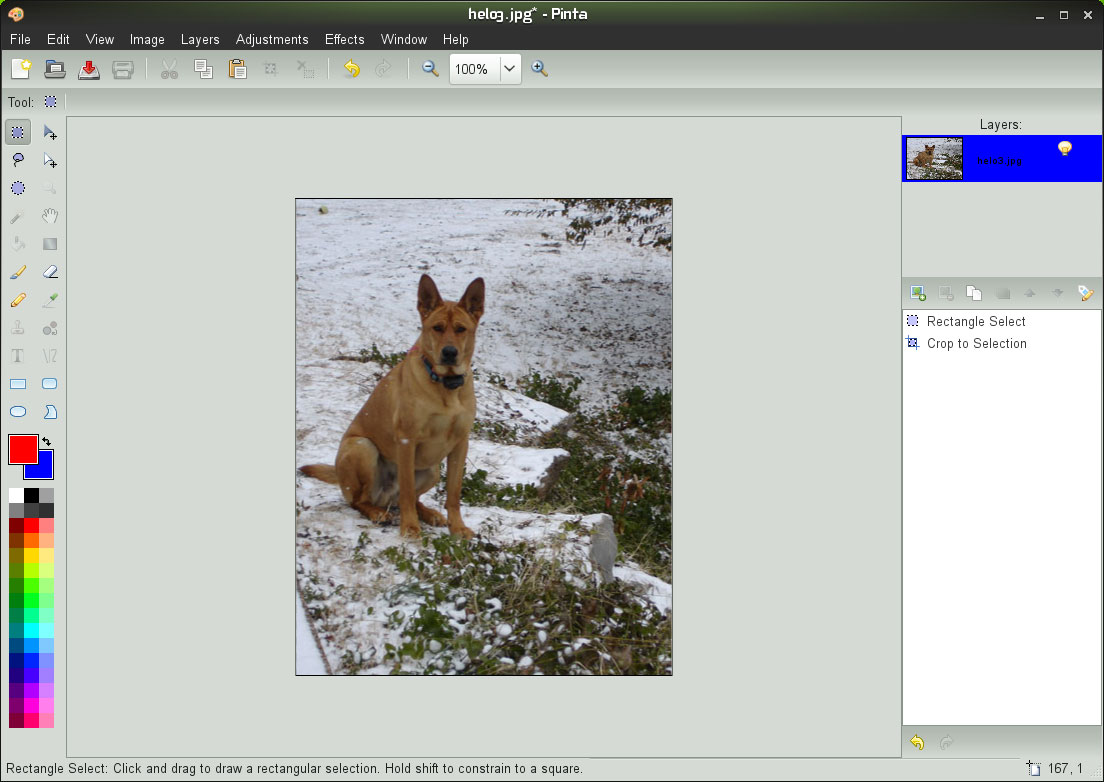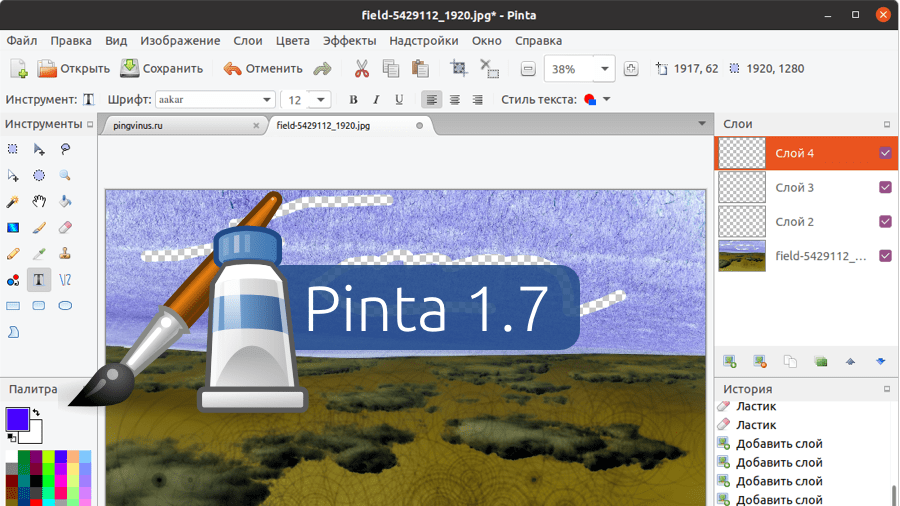


Pinta builds on top of an older release of Paint.NET, from back when the latter program was available under the MIT/X free software license. You will need the Mono runtime version 2.8 or later. Pinta is GTK+-based, so it requires at least a portion of the GNOME stack to be installed, but it should run equally well on GNOME, KDE, and other desktop environments.
#Pinta linux install
autogen.sh make sudo make install 3-step shuffle. The compilation process is a straightforward. The 1.0 release is new enough that your Linux distribution is not likely to have packages yet in that case you can grab the tar archive. Also linked in are Mono and GTK+ packages for the proprietary OSes, and a link to the source code repository on Github.
#Pinta linux mac os
At the moment, the 1.0 offerings are provided as a tar archive for Linux, and ready-to-install binaries for Windows and Mac OS X. The Pinta Web site hosts downloadable packages. Is it a replacement for GIMP or Krita? That depends on what you need to do. As such, it uses Mono under the hood, but it gains the ability to run equally well on Linux, Mac OS X, or Windows. Pinta is intended to be a clone of Paint.NET, the Windows-only raster editor written in. Now if you have a query or feedback then write us in the comments below.Pinta, a “lightweight” open source raster image editor, turned 1.0 on April 27, offering Linux users another choice for simple image editing. So you have successfully installed the Pinta photo editing tool on your Ubuntu system. Now you can import or open an image file and start editing it. The following image shows the user interface of the Pinta photo-editing application. Once the installation is completed you can launch it by searching Pinta in the Ubuntu activities dashboard. Once it gets installed you can launch this application by using the given command – flatpak run Launch the Pinta application on Ubuntu Now use the given command to install the Pinta Flatpak package – flatpak install flathub Next, add the Flathub repository by using the given command – flatpak remote-add -if-not-exists flathub To install Flatpak open your terminal and execute the given command – sudo apt install flatpak -y To download the Pinta Flatpak package first you need to install and configure Flatpak on your system. Now to install the Pinta snap package on your system simply use – sudo snap install pinta Method 4: Installing Pinta using Flatpakįlatpak is another way of building, distributing, and running sandboxed desktop applications on a Linux system. Snaps are containerized packages that can be used across the different distributions of Linux. Now use the following command to install Pinta on your system – sudo apt install pinta -y Method 3: Installing Pinta using snap
#Pinta linux update
Refresh the apt package index – sudo apt update Use the following command to add Pinta’s PPA repository on your system – sudo add-apt-repository ppa:pinta-maintainers/pinta-stable The benefit of this method is that you get the latest version of the application. Method 2: Installing Pinta using the official PPA repository Type y and then press the Enter key when it asks for your confirmation. Next, use the following command to install Pinta on your system – sudo apt install pinta


 0 kommentar(er)
0 kommentar(er)
